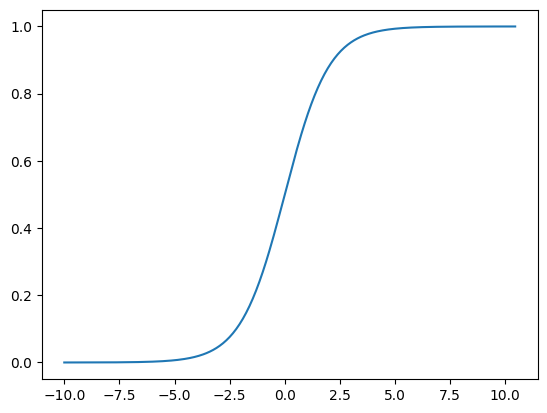Softmax#
Introduction#
Softmax is a multi-dimension version of sigmoid. Softmax is used when:
Used as a softer max function, as it makes the max value more pronounced in its output.
Approximating a probability distribution, because the output of softmax will never exceed \( 1 \) or get below \( 0 \).
Definition#
softmax(\( x_i \)) = \( \frac{e^{x_i}}{\sum_j e^{x_j}} \)
With temperature
softmax(\( x_i \), \( t \)) = \( \frac{e^{\frac{x_i}{t}}}{\sum_j e^{\frac{x_j}{t}}} \)
How does softmax look, and how it works in code?#
%matplotlib inline
import numpy as np
from matplotlib import pyplot as plt
def softmax(x, t = 1):
exp = np.exp(x / t)
# sums over the last axis
sum_exp = exp.sum(-1, keepdims=True)
return exp / sum_exp
Now let’s see how softmax approaches the max function
array = np.random.randn(5)
softer_max = softmax(array)
print(array)
print(softer_max)
[ 0.184181 1.69036063 0.28227309 -0.54696496 0.09917348]
[0.1248066 0.56281162 0.13766971 0.06007654 0.11463553]
See how the maximum value gets emphasized and gets a much larger share of probability. Applying weighted average would make it even clearer.
average = array.sum() / array.size
weighted = array @ softer_max
print(average)
print(weighted)
print(array.max())
0.3418046481462643
0.9917110987649045
1.690360625256905
See how the weighted average gets closer to the real maximum. To make it even closer to max, reduce the temperature.
colder_max = softmax(array, 0.1)
weighted = array @ colder_max
print(average)
print(weighted)
print(array.max())
0.3418046481462643
1.6903589162351116
1.690360625256905
Softmax is a generalization of sigmoid. Sigmoid can be seen as softmax(\( [x, 0] \)). Plotting shows that.
x = np.zeros([410, 2])
x[:, 0] = np.arange(-200, 210) / 20
y = softmax(x)
plt.plot(x[:, 0], y[:, 0])
plt.show()

